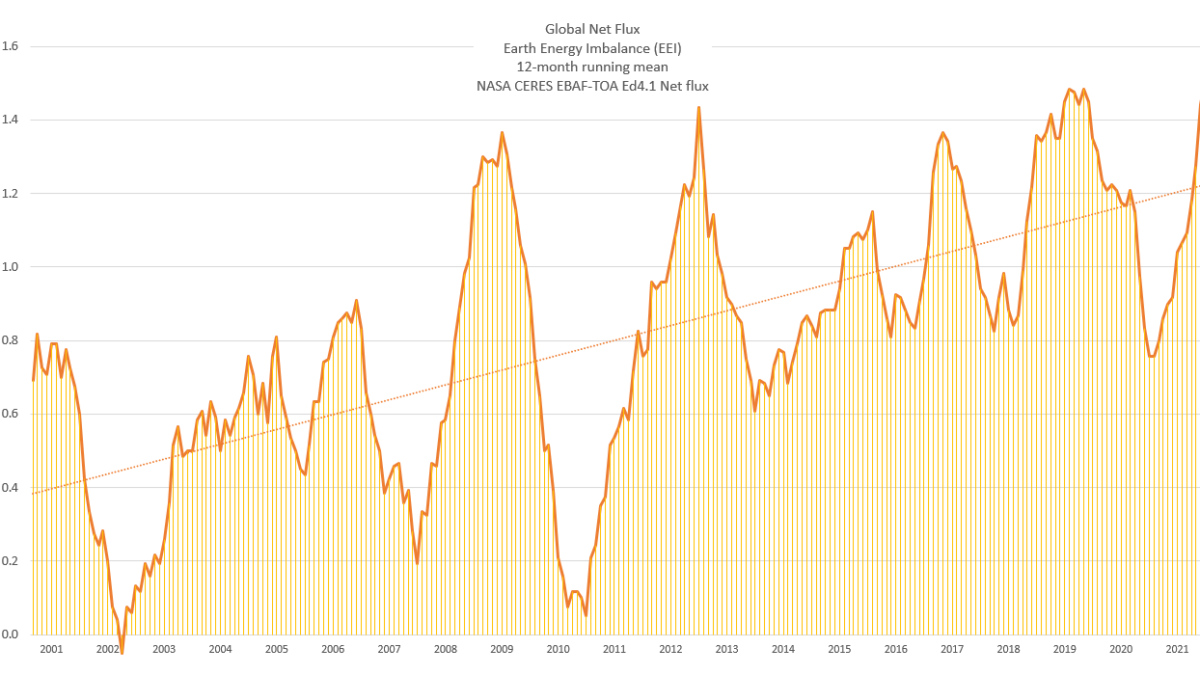Bushfires could kill almost 2500 Australians by 2030 – “This is not the first report saying this sort of thing, but each of the previous ones have to some extent been ignored by government”

By Lachlan Abbott
2 January 2023
(The Sydney Morning Herald) – Increasingly frequent and severe bushfires linked to climate change could kill nearly 2500 Australians and cost the economy billions of dollars by the end of the decade, according to new research.
Modelling from Monash University’s Centre for Medicine Use and Safety has estimated 2418 people could lose their lives to bushfires and related conditions between 2021 and 2030.
The research, published in the Current Problems in Cardiology journal, also found Australia’s gross domestic product (GDP) would suffer a $17.2 billion hit due to fires over the same period.
Health experts have also warned that mental scarring from bushfires requires greater attention.
Lead author Zanfina Ademi said the research used a “very conservative” model which focused only on smoke-related health impacts. It found healthcare bills for smoke-related hospitalisations could cost Australians an estimated $110 million over the decade.
“The bottom line of this work is the burden due to bushfires is large, so any investment that the government would put in place would be cost-effective,” Ademi said.
“Imagine if [mental health impacts] had been included as a part of the estimation. The burden of bushfires would be even larger.”
Professor Stephen Duckett, a health economist at the University of Melbourne, said long-term mental scarring from fires remained a major issue that was overlooked.
“The immediate [media] reporting is just the tip of the iceberg,” he said.
“Really, the big issue is the impact of climate change and bushfires, not only in the immediate deaths, but also in the long-term [post-traumatic stress] and mental health issues … which, I think, are just as significant and affect a lot more people.”

To tackle this, Duckett, a former head of the Grattan Institute’s health program, called for greater investment in local communities.
“It’s all very well to have a volunteer fire brigade that responds immediately, but you have to have the local support networks in place after the bushfire passes,” he said.
Duckett agreed with the Monash study that lingering physical respiratory health problems were a significant bushfire-related issue that could lead to thousands of deaths.
“This is not the first report saying this sort of thing, but each of the previous ones have to some extent been ignored [by government],” he said.
The Black Summer bushfires of 2019-20 killed 34 people from direct causes and another 417 from longer-term consequences, the study says.
One of the deadliest consequences of bushfires is the fine-particulate matter in smoke that can travel vast distances and is linked to higher mortality and cardiovascular and respiratory problems. Around the world, about 340,000 deaths a year are traced back to bushfire smoke.
The Monash University-led research found reducing bushfire risk by 10 per cent, for example, could save $11 million in healthcare costs and $1.9 billion in GDP.
Ademi said this could be through improving fuel reduction, but also required greater climate change mitigation.
“Individual actions are not enough for bushfires,” she said. “We need urgent involvement of government, not just for the bushfires, but also to speed up implementation of green and sustainable technologies.”
The study, which Ademi co-authored, noted: “Bushfires are a natural part of Australia’s ecosystem, but the frequency and severity of bushfires in Australia has been increasing, due in part to climate change.” [more]
‘Very conservative’: Bushfires could kill almost 2500 Australians by 2030
The Hospitalizations for Cardiovascular and Respiratory Conditions, Emergency Department Presentations and Economic Burden of Bushfires in Australia Between 2021 and 2030: A Modelling Study
ABSTRACT: The health and environmental impacts of bushfires results in substantial economic costs to society. The present analysis sought to estimate the burden of bushfires in Australia over 10 years from 2021 to 2030 inclusive. A dynamic model with yearly cycles was constructed to simulate follow-up of the entire Australian population from 2021 to 2030, capturing deaths and years of life lived. Estimated numbers of bushfire-related-deaths, costs of related-hospitalizations, and broader economic costs were derived from published sources. A 5% annual discount rate was applied to all costs incurred and life years lived from 2022 onwards. Over the 10 years from 2021 to 2030, the modelled analysis predicted that 2418 [95% confidence interval (CI) 2412 – 2422] lives would be lost to bushfires, as well as 8590 [95% CI 8573 – 8606] years of life lost (discounted). Healthcare costs arising from deaths for smoke-related conditions, hospitalizations amounted to AUD $110 million [95% CI 91-129 million]. The impact on gross domestic product (GDP) totaled AUD $17.2 billion. A hypothetical intervention that reduces the impact of bushfires by 10% would save $11 million in healthcare costs and $1.9 billion in GDP. The health and economic burden of bushfires in Australia looms large during 2021 and 2030. This underscores the importance of actions to mitigate bushfire risk. The findings are useful for the future design and delivery and help policy makers to make informed decisions about investment in strategies to reduce the incidence and severity of future bushfires.


